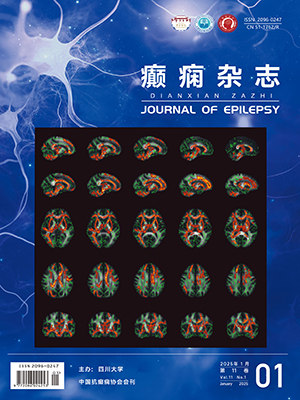| 1. |
Stephen LJ, Brodie MJ. Antiepileptic drug monotherapy versus polytherapy: pursuing seizure freedom and tolerability in adults. Curr Opin Neurol, 2012, 25(2): 164-172.
|
| 2. |
Kwan P, Brodie MJ. Early identification of refractory epilepsy. N Engl J Med, 2000, 342(5): 314-9.
|
| 3. |
Chen Z, Brodie MJ, Liew D, et al. Treatment outcomes in patients with newly diagnosed epilepsy treated with established and new antiepileptic drugs: A 30-Year Longitudinal Cohort Study. JAMA Neurol, 2018, 75(3): 279-286.
|
| 4. |
French JA, Faught E. Rational polytherapy. Epilepsia, 2009, 50(Suppl 8): 63-68.
|
| 5. |
Semah F, Thomas P, Coulbaut S, et al. Early add-on treatment vs alternative monotherapy in patients with partial epilepsy. Epileptic Disord, 2014, 16(2): 165-174.
|
| 6. |
Beghi E, Gatti G, Tonini C, et al. Adjunctive therapy versus alternative monotherapy in patients with partial epilepsy failing on a single drug: a multicentre, randomised, pragmatic controlled trial. Epilepsy Res, 2003, 57(1): 1-13.
|
| 7. |
Lee BI, Park KM, Kim SE, et al. Clinical opinion: Earlier employment of polytherapy in sequential pharmacotherapy of epilepsy. Epilepsy Res, 2019, 156: 106165.
|
| 8. |
Chi X, Li R, Hao X, et al. Response to treatment schedules after the first antiepileptic drug failed. Epilepsia, 2018, 59(11): 2118-2124.
|
| 9. |
Kwan P, Brodie MJ. Epilepsy after the first drug fails: substitution or add-on? Seizure, 2000, 9(7): 464-468.
|
| 10. |
Trinka E, Cock H, Hesdorffer D, et al. A definition and classification of status epilepticus--Report of the ILAE Task Force on Classification of Status Epilepticus. Epilepsia, 2015, 56(10): 1515-1523.
|
| 11. |
Bjørke AB, Nome CG, Falk RS, et al. Evaluation of long-term antiepileptic drug use in patients with temporal lobe epilepsy: Assessment of risk factors for drug resistance and polypharmacy. Seizure, 2018, 61: 63-70.
|
| 12. |
Santulli L, Coppola A, Balestrini S, et al. The challenges of treating epilepsy with 25 antiepileptic drugs. Pharmacol Res, 2016, 107: 211-219.
|
| 13. |
Horváth L, Fekete K, Márton S, et al. Outcome of antiepileptic drug treatment of 1282 patients with epilepsy, their pharmacovigilance reports and concomitant medication on CNS in an East-Hungarian adult database. J Neurol Sci, 2016, 369: 220-226.
|
| 14. |
Scheffer IE, Berkovic S, Capovilla G, et al. ILAE classification of the epilepsies: Position paper of the ILAE Commission for Classification and Terminology. Epilepsia, 2017, 58: 512-521.
|
| 15. |
Stafstrom CE, Carmant L. Seizures and epilepsy: an overview for neuroscientists. Cold Spring Harb Perspect Med, 2015, 5(6): a022426.
|
| 16. |
Aaberg KM, Bakken IJ, Lossius MI, et al. Short-term seizure outcomes in childhood epilepsy. Pediatrics, 2018, 141(6): e20174016.
|
| 17. |
Atalar AÇ, Vanlı-Yavuz EN, Yılmaz E, et al. Long-term follow-up of a large cohort with focal epilepsy of unknown cause: deciphering their clinical and prognostic characteristic. J Neurol, 2020, 267(3): 838-847.
|
| 18. |
Löscher W, Potschka H, Sisodiya SM, et al. Drug resistance in epilepsy: Clinical impact, potential mechanisms, and new innovative treatment options. Pharmacol Rev, 2020, 72(3): 606-638.
|
| 19. |
Betjemann JP, Lowenstein DH. Status epilepticus in adults. Lancet Neurol, 2015, 14(6): 615-624.
|




